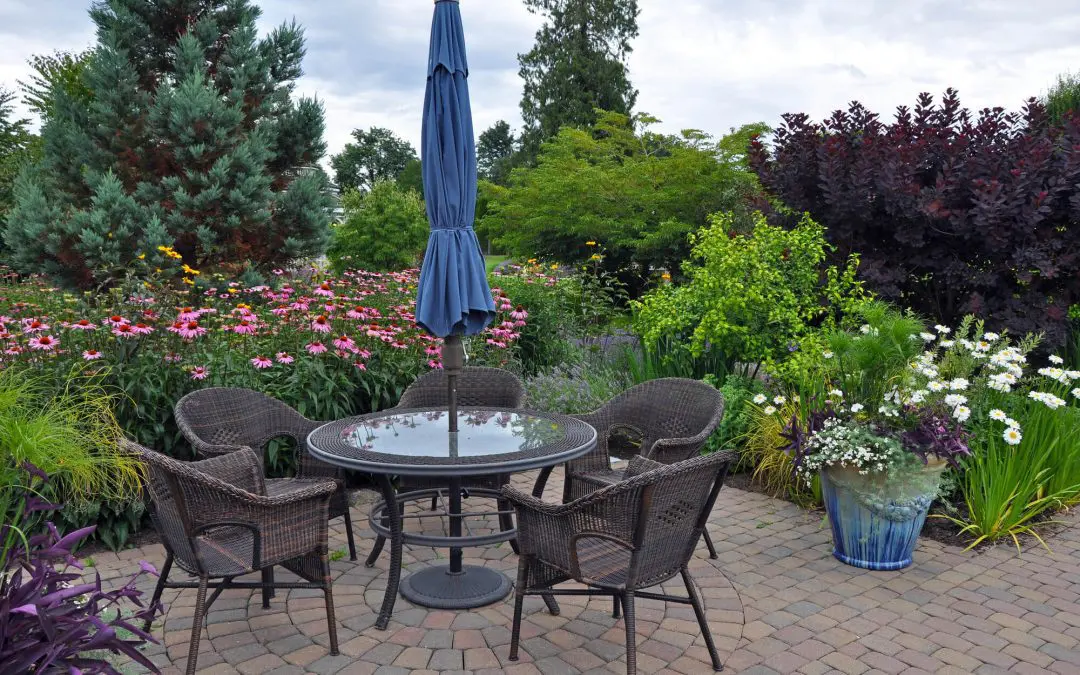One of the most important decisions when designing an outdoor space is selecting the right patio material. The material you choose influences the look and feel of your patio and impacts its durability, maintenance, and cost. Here’s a guide to help you explore different patio materials and find the perfect surface for your outdoor oasis.
1. Concrete: The Versatile Choice for Patio Materials
Concrete is one of the most popular and versatile patio materials. It offers a clean, modern look and can be customized in various ways. You can opt for stamped concrete, which mimics the appearance of stone, brick, or wood, or go for stained or colored concrete to add a unique flair. Concrete patios are durable, low-maintenance, and can withstand various weather conditions. However, they can crack over time and may require periodic sealing to maintain their appearance.
2. Pavers: Aesthetic Flexibility
Pavers are another excellent choice for patios, offering a range of design possibilities. Made from materials like brick, stone, or concrete, pavers come in various shapes, sizes, and colors. This flexibility allows you to create intricate patterns and designs, making your patio a true reflection of your style. Pavers are durable and can handle heavy traffic, but they do require some maintenance, such as weed control and occasional replacement of individual pavers if they become damaged.
3. Natural Stone Patio Materials: Timeless Elegance
For a timeless and elegant look, natural stone is a top choice. Materials like slate, flagstone, limestone, and travertine offer unique textures and colors that blend seamlessly with natural surroundings. Stone patios are durable and can last decades but are more expensive than other materials. They also require regular maintenance, such as sealing, to prevent staining and preserve their beauty.
4. Wood: Warmth and Natural Appeal
Wood decks exude warmth and natural beauty, making them great for creating cozy outdoor spaces. Common wood choices include cedar, redwood, and pressure-treated pine. These woods are resistant to rot and insects, making them suitable for outdoor use. However, wood requires regular maintenance, such as staining and sealing, to protect it from the elements and prevent fading or warping.
5. Composite Decking: Low-Maintenance Luxury
Composite decking is an increasingly popular option for patios, combining the look of wood with low-maintenance benefits. Made from a blend of wood fibers and plastic, composite decking is resistant to rot, insects, and fading. It requires minimal upkeep, making it an attractive choice for busy homeowners. While the initial cost can be higher than wood, the long-term savings on maintenance make it a cost-effective option.
6. Gravel Patio Materials: Budget-Friendly and Versatile
Gravel is an economical and versatile choice for patios. It offers a rustic, informal look and is available in various sizes and colors. Gravel is easy to install and can be combined with other materials, such as pavers or stepping stones, to create unique designs. However, it requires regular raking and may not be the best option for high-traffic areas or homes with pets.
7. Tile: Stylish and Sleek
For a sleek and stylish patio, consider using outdoor tile. Tiles are available in a wide range of materials, including ceramic, porcelain, and stone, and can be customized with different colors, patterns, and textures. They are durable and easy to clean but can become slippery when wet, so choose tiles with a textured surface or non-slip finish. Tile patios require a stable foundation to prevent cracking.
Choosing the Right Patio Material
Selecting the best patio material for your property involves considering budget, maintenance, durability, and aesthetic appeal. Whether you prefer the versatility of concrete, the elegance of natural stone, or the low-maintenance benefits of composite decking, there’s a perfect patio material to suit your needs and style. Take the time to explore your options, consult with professionals if needed, and create an outdoor space you and your family can enjoy for years.
FAQs for Patio Materials
What are the best options for slip-resistant patio surfaces?
Consider textured materials like stamped concrete, rough-finished natural stone, or textured pavers for slip-resistant patio surfaces. Outdoor tiles with a non-slip finish are also a good choice. Avoid smooth surfaces, especially in areas prone to rain or around pools, as they can become dangerously slick when wet.
How do weather conditions affect the lifespan of patio materials?
Weather conditions can significantly affect the lifespan of patio materials. Freeze-thaw cycles can cause concrete to crack and natural stone to shift. Constant exposure to sunlight can fade and weaken wood and composite decking. High moisture levels can lead to mold and rot in wood. Selecting weather-resistant materials and performing regular maintenance can mitigate these effects and extend the life of your patio.
Can I install a patio myself, or should I hire a professional?
While DIY patio installation is possible for many materials, such as gravel, basic concrete, or pavers, it often requires a lot of preparation, knowledge, and physical labor. More complex installations, like natural stone or intricate paver patterns, typically benefit from professional expertise to ensure proper base preparation, leveling, and drainage. Hiring a professional can also save time and reduce the risk of costly mistakes.
What are the most budget-friendly patio material options?
Concrete, gravel, and some types of pavers are the most budget-friendly patio materials. Concrete is inexpensive, especially in its plain form, while gravel offers an economical and quick-to-install option. Basic pavers made from concrete or brick can also be cost-effective compared to natural stone or composite materials.
Precision Home Inspectors offers comprehensive home inspection services to customers in Hampton Roads, Virginia. Contact us to request an appointment.

